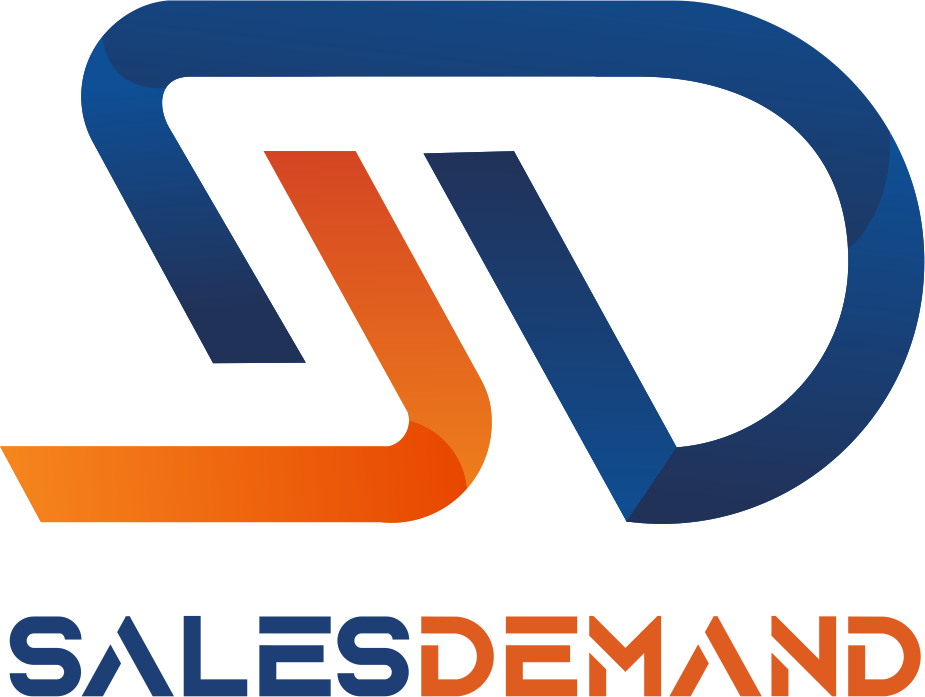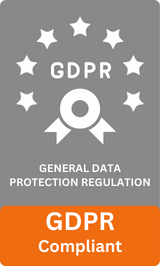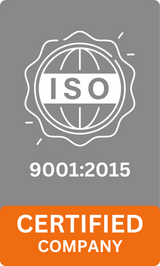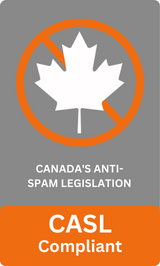
Demand generation has become the linchpin for driving growth and achieving business objectives in a hyper-competitive b2b landscape. With the proliferation of digital marketing channels, businesses are increasingly looking for strategies that allow them to engage prospects at the right time with the right message. Enter Contact-Level Precision Targeting — a method that is transforming how businesses approach demand generation by targeting specific individuals within an organization rather than relying on broader demographic categories.
It allows marketers to refine their approach by personalizing messages for decision-makers, influencers, and key stakeholders, resulting in more relevant and impactful engagement.
In this blog, we will explore the essence of contact-level precision targeting, why it is so effective in demand generation, and how businesses can implement this strategy for better results.
Table of Contents
ToggleWhat is Contact-Level Precision Targeting?
Contact-level precision targeting involves going beyond traditional demographic segmentation to focus on specific individuals within a company, making it more targeted and efficient. While traditional B2B marketing strategies may focus on reaching entire companies or departments, contact-level precision targeting hones in on the exact decision-makers, influencers, and other key stakeholders that are most likely to engage with your offering.
This approach relies heavily on data to create highly personalized marketing experiences. The data may include demographic information, job titles, previous interactions with the brand, purchase history, and behavioral insights across digital touchpoints. Marketers can use this data to design campaigns that speak directly to the unique needs and challenges faced by individual contacts.
In simple terms, rather than sending a one-size-fits-all message to a company or industry, businesses can send tailored communications that resonate with each specific contact within a company. Whether it’s an email, LinkedIn message, or a targeted ad, this technique ensures that the content is relevant, timely, and likely to drive conversions.
The Role of Data in Contact-Level Precision Targeting
The power of contact-level precision targeting lies in the rich, high-quality data that informs it. Effective targeting is not possible without access to accurate and timely information about your prospects. To succeed, businesses need to gather comprehensive data on individual contacts, including professional roles, purchasing behavior, content interactions, and even behavioral intent.
- First-Party Data: First-party data refers to the information a company collects directly from its interactions with customers and leads. This data can be gathered through a variety of touchpoints, such as website visits, email opens, event attendance, and form submissions.
First-party data is extremely valuable because it is collected directly from the source and is often highly reliable. For example, if a contact has attended a webinar on a particular product, you know they are interested in that product, and you can follow up with relevant content.
- Third-Party Data: Third-party data is gathered from external sources and provides valuable insights into the behavior and preferences of prospects. This includes intent data, which reveals signals of interest such as content consumption, web searches, and engagement with competitors.
Combining first-party data with third-party data allows marketers to create more detailed profiles of contacts, enabling them to identify when a prospect is likely to be in the market for their products or services.
With these insights, marketers can create a comprehensive contact profile that not only captures demographic data but also tracks behavior across channels. These profiles form the foundation of personalized marketing campaigns that speak directly to the specific needs, pain points, and challenges of individual contacts.
Why Contact-Level Precision Targeting is Crucial for Demand Generation
Demand generation is all about creating awareness and interest in your products or services, generating leads, and ultimately driving sales. The key to success lies in engaging with the right prospects at the right time. This is where contact-level precision targeting comes into play, as it provides several compelling advantages over traditional demand generation strategies.
1# More Personalization:
Personalization has become one of the most critical factors in the success of demand generation campaigns. Consumers today expect relevant, personalized content that speaks directly to their unique needs. With contact-level precision targeting, businesses can tailor every message to fit the individual, creating a more personalized and engaging experience.
Personalization can range from simple aspects like addressing the contact by name to offering content specifically related to their job function or industry.
For example, if a lead from the finance sector is engaging with a blog post on your website about how to manage cash flow during an economic downturn, you can follow up with a personalized email that dives deeper into the topic. By aligning the message with their specific interests, you make it more likely that they will engage further with your brand.
2# Increased Engagement Rates:
The more relevant and personalized the content, the more likely a contact is to engage with it. By using contact-level precision targeting, businesses can significantly boost engagement rates across various channels.
Whether through email, social media, or content marketing, the tailored approach ensures that contacts are presented with content that is relevant to them, increasing the likelihood of them taking action.
Higher engagement rates mean more opportunities to nurture leads, further increasing the chances of conversion. Engaged leads are more likely to participate in product demos, download case studies, or request a meeting, all of which are valuable steps in the buyer’s journey.
3# Higher Conversion Rates:
One of the most significant benefits of contact-level precision targeting is the improvement in conversion rates. Because you are targeting individuals with content that speaks directly to their specific needs, you are more likely to guide them through the buyer’s journey. Contacts are more likely to move from awareness to interest, consideration, and ultimately, purchase when the content is tailored to their preferences.
4# Better Lead Scoring and Qualification:
Lead scoring is an essential part of demand generation, as it helps businesses prioritize leads based on their likelihood to convert. Contact-level precision targeting enhances lead scoring by providing more granular data on individual prospects.
By analyzing behavior such as the types of content a contact engages with or their response to personalized outreach, marketers can assign higher scores to contacts that are more likely to convert, ensuring that sales teams focus their efforts on the most promising leads.
5# Improved Customer Journey Mapping:
Understanding the customer journey is critical for effective lead nurturing. Contact-level precision targeting allows marketers to map the journey of individual leads and determine where they are in the sales funnel.
By analyzing touchpoints and behaviors, businesses can identify key moments where prospects need additional information or nurturing. This allows businesses to create a seamless and personalized journey that increases the chances of conversion.
Benefits of Contact-Level Precision Targeting for B2B Marketers
For B2B marketers, contact-level precision targeting offers several key benefits that help optimize demand generation efforts:
- More Accurate Targeting: Traditional marketing strategies often rely on broad demographic categories to define target audiences. While this approach may work in some cases, it is not always efficient in B2B marketing, where businesses target a smaller pool of potential customers.
Contact-level precision targeting ensures that the marketing message is tailored for specific individuals, making it much more likely that the message resonates with the right people.
- Increased ROI: When marketers can zero in on the most relevant prospects, they can allocate their resources more efficiently. Instead of casting a wide net, businesses can focus their marketing efforts on high-value contacts, improving the return on investment of each campaign.
- Enhanced Customer Relationships: Contact-level precision targeting aids businesses in establishing stronger, more meaningful customer relationships by providing personalized content and solutions, demonstrating understanding of each contact’s needs and challenges, thereby enhancing engagement, fostering trust, and loyalty.
How to Implement Contact-Level Precision Targeting in Demand Generation
Implementing contact-level precision targeting requires a combination of the right tools, processes, and strategies. Here are the key steps to take when adopting this approach in your demand generation campaigns:
- Invest in Data Management Tools: To achieve precision targeting, businesses need to gather and organize data on their prospects, which can be streamlined by using a Customer Relationship Management system or marketing automation platform, which provides a centralized database of contact information.
- Leverage Behavioral Insights: Understanding the behavior of individual contacts is essential for effective targeting. By tracking how contacts interact with your website, emails, and social media posts, businesses can gain valuable insights into their preferences and interests. This allows marketers to tailor content that aligns with the specific needs of each contact, whether it’s offering case studies, whitepapers, or product demos.
- Create Custom Content for Different Personas: To make contact-level precision targeting truly effective, businesses need to develop content that speaks to the unique personas they are targeting. This may involve segmenting contacts by industry, job function, or even stage in the buyer’s journey. Personalized content could include everything from tailored email campaigns to landing pages that address the specific challenges each persona faces.
- Monitor and Optimize Campaigns: Once campaigns are launched, it’s crucial to track performance and make adjustments as needed. Use analytics tools to assess which messages resonate with different contacts and which channels are most effective in driving engagement. This ongoing optimization ensures that campaigns remain relevant and continue to yield strong results.
Measuring the Success of Contact-Level Precision Targeting
To assess the effectiveness of contact-level precision targeting, marketers should track key performance indicators such as:
- Conversion Rate: Ultimately, the goal of demand generation is to convert leads into customers. By tracking the conversion rate of targeted contacts, businesses can evaluate the success of their efforts and identify areas for improvement.
- Engagement Metrics: Metrics such as email open rates, click-through rates, and social media engagement provide valuable insights into how well the personalized content is resonating with prospects.
- Lead Velocity: Lead velocity measures how quickly leads move through the sales funnel. Faster lead velocity indicates that your contact-level precision targeting strategy is helping to nurture leads more effectively and accelerate the sales process.
Conclusion:
Contact-level precision targeting represents a significant shift in how businesses approach demand generation. By focusing on individual contacts rather than broader demographic segments, companies can deliver highly personalized content, improve engagement, and increase conversions.
As marketing technology continues to evolve, businesses that embrace this will be better positioned to stay ahead of the competition, deliver exceptional customer experiences, and drive sustainable growth.
The future of demand generation is personalized, and contact-level precision targeting is at the heart of this transformation.
I hope you find the above content helpful. For more such informative content, please visit SalesDemand.










